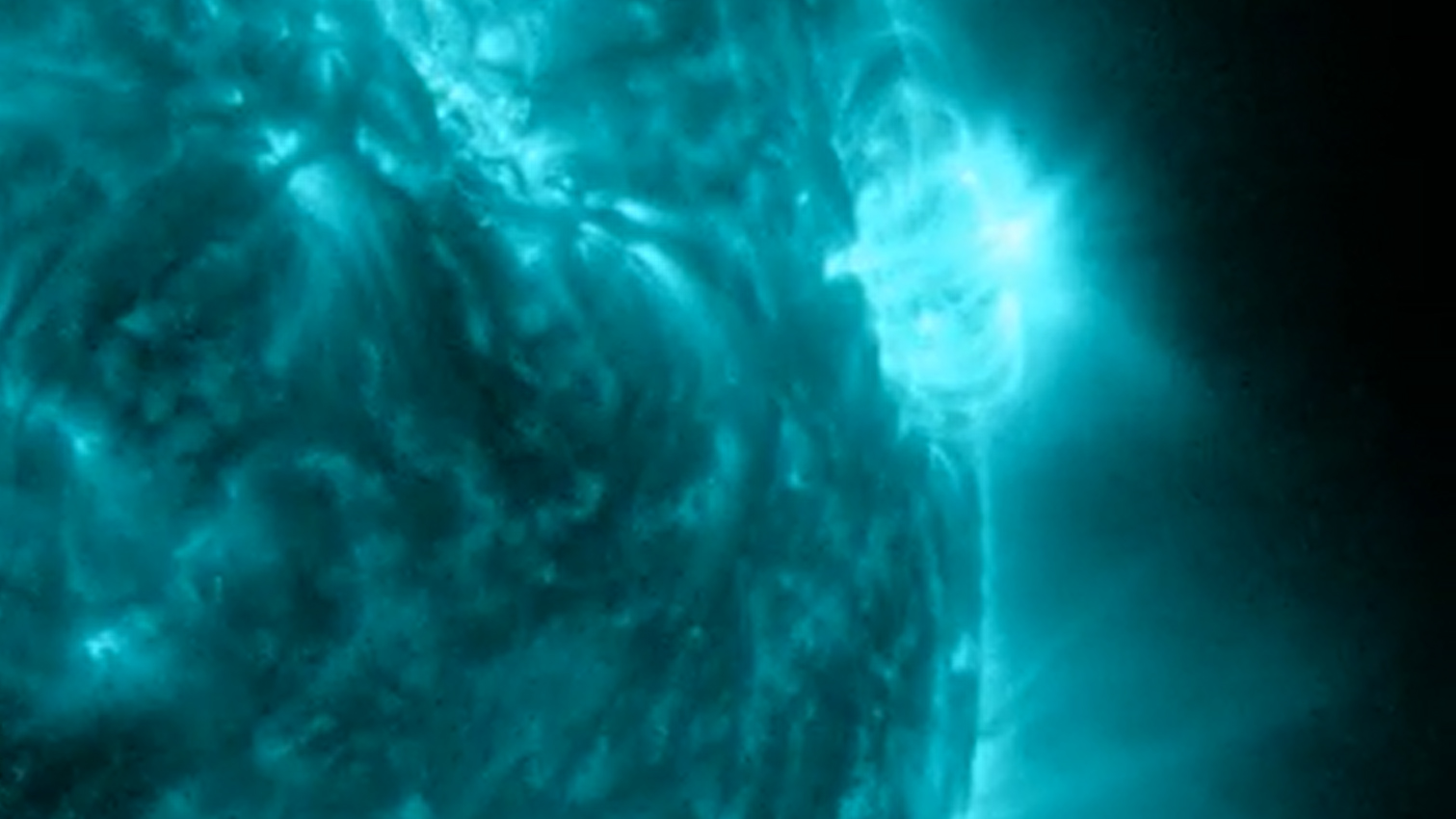Powerful sun storm knocks out radio transmissions across North America
The sun unleashed its second X-flare in less than three days — and we should brace for more such activity.
A powerful solar flare disrupted radio and navigation signals across North America on Monday (Aug. 7) and prompted space weather forecasters to issue warnings because of energetic particles hitting Earth.
The flare, classified as an X1.5, was the 20th X flare — the most potent solar flare category — of the current 11-year solar cycle, which will reach its maximum next year.
Solar flares are energetic flashes of radiation that explode from magnetically dense, cool regions on the sun's surface known as sunspots. Traveling at the speed of light, the photons from these flares arrive at our planet in eight minutes. As the radiation from the flares interacts with particles in Earth's ionosphere, the region of the atmosphere at altitudes between 50 and 400 miles (80 and 650 kilometers), it supercharges them. These changes then affect radio and satellite signals that pass through this region.
Related: Sun blasts out highest-energy radiation ever recorded, raising questions for solar physics

According to solar physicist Keith Strong, the blackout caused by the Monday flare was a strong category 3 on the five-point scale developed by the U.S. National Oceanic and Atmospheric Administration (NOAA).
"The X1.5 Flare caused an R3 (strong) radio blackout event on the daylit side of the Earth (most of the US and Canada and the Pacific Ocean)," Strong said on X, formerly Twitter. "Frequencies below 5 Mhz were most affected and navigation signals degraded."
The flare burst out of the largest and most active sunspot group currently visible on the sun's disk, according to the U.K. space weather forecaster Met Office, and emerged only two days after a somewhat weaker X flare that occurred on Saturday (Aug. 5).
Breaking space news, the latest updates on rocket launches, skywatching events and more!
In addition to these two powerful flares, the sun also unleashed multiple moderate-class flares in recent days, three of which occurred in the past 24 hours.
The Met Office issued a warning for a mild solar radiation storm due to the presence of charged solar particles in Earth's atmosphere, a result of the lashing by those solar flares. In extreme cases, these charged particles may pose a radiation hazard to astronauts in space and passengers and crew on aircraft traveling over polar regions. They can also damage satellites in orbit. The current event, a mild category 1, should, however, be rather harmless.
The Met Office predicts that further strong flares may occur while the large sunspot cluster remains visible on the face of the sun. That threatening region should, however, disappear behind the sun's edge within the next two days, giving space weather forecasters some respite.
In the meantime, however, these experts are bracing for the arrival of two coronal mass ejections (CME), huge clouds of magnetized gas that frequently escape from the sun together with solar flares. CMEs that hit Earth can cause a different type of phenomenon, known as a geomagnetic storm, as they interact with our planet's magnetic field.
Geomagnetic storms produce beautiful aurora displays but can also cause problems to satellite operators as they make Earth's atmosphere swell. In the most severe cases, geomagnetic storms can knock out power grids and telecommunication networks. The upcoming geomagnetic storm could reach a strong G3 level, according to Spaceweather.com.

Tereza is a London-based science and technology journalist, aspiring fiction writer and amateur gymnast. She worked as a reporter at the Engineering and Technology magazine, freelanced for a range of publications including Live Science, Space.com, Professional Engineering, Via Satellite and Space News and served as a maternity cover science editor at the European Space Agency.
